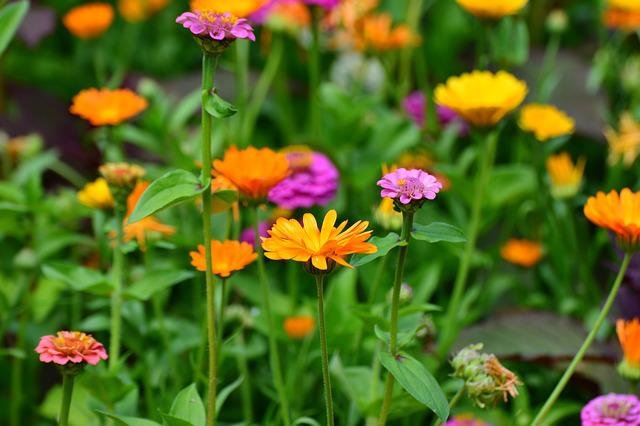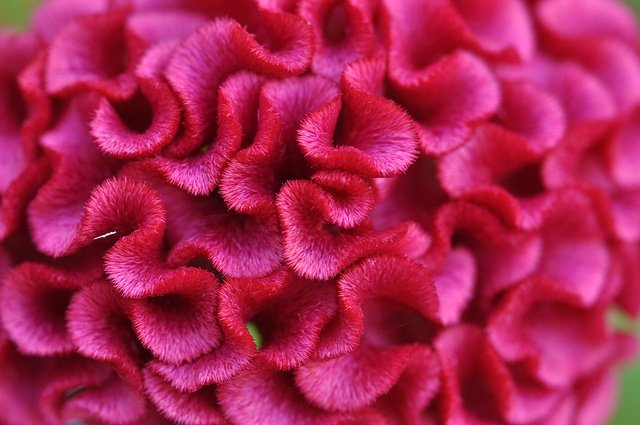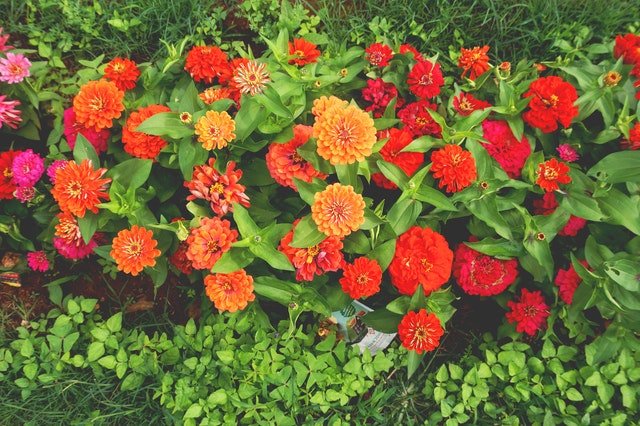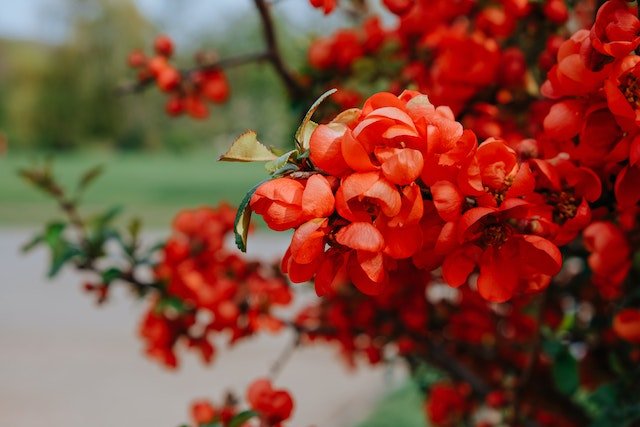Noted for its harmonious and serene atmosphere, it’s no surprise to see why more and more gardeners are investing in an indoor Japanese garden. The indoor zen gardens usually highlight the use of rock, sand, and gravel, along with water elements, lanterns, and greeneries–but with some creativity, there is more to be made from the basic equipment. Spark your imagination, and reward your body and soul with tranquility by using our recommended Japanese indoor garden design.
Table of Contents
Tsubo-niwa: The Art of Small Zen Garden
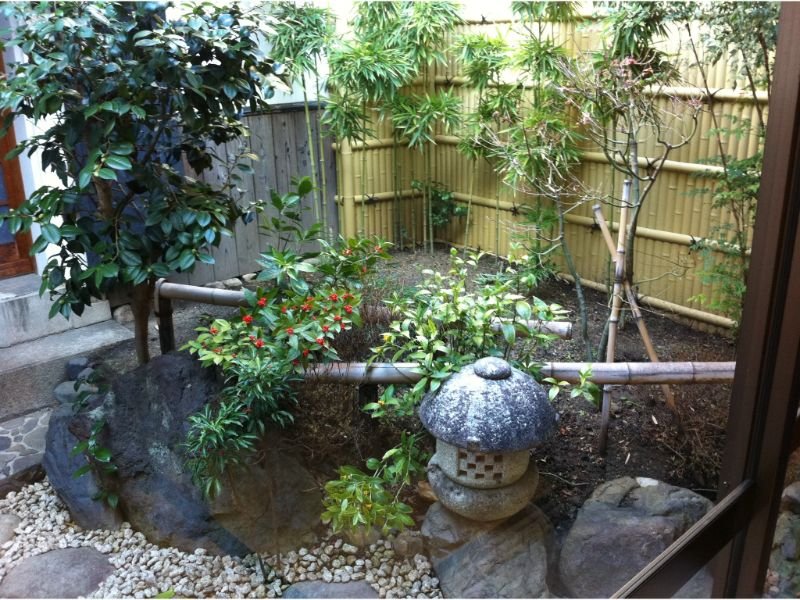
Despite being filled with glimmering tall skyscrapers, especially in cities like Tokyo and Yokohama, there is a piece of serenity you can find to help you connect with nature. That’s what we call ‘tsubo-niwa’, which literally means a small garden. The aim of tsubo-niwa is not about how massive or small your gardening landscape is, but more about teaching us how to feel nature and its calm behavior.
Measuring roughly only about 3 meters or even less, this type of garden is perfect to incorporate the essence of a zen garden indoors. Not taking up so much space and prioritizing the aspect of minimalism makes the daily care of this small, indoor Japanese garden typically easy. Here are some of the gorgeous tsubo-niwa-inspired zen gardens for any indoor space.
Tranquility In Your Workplace
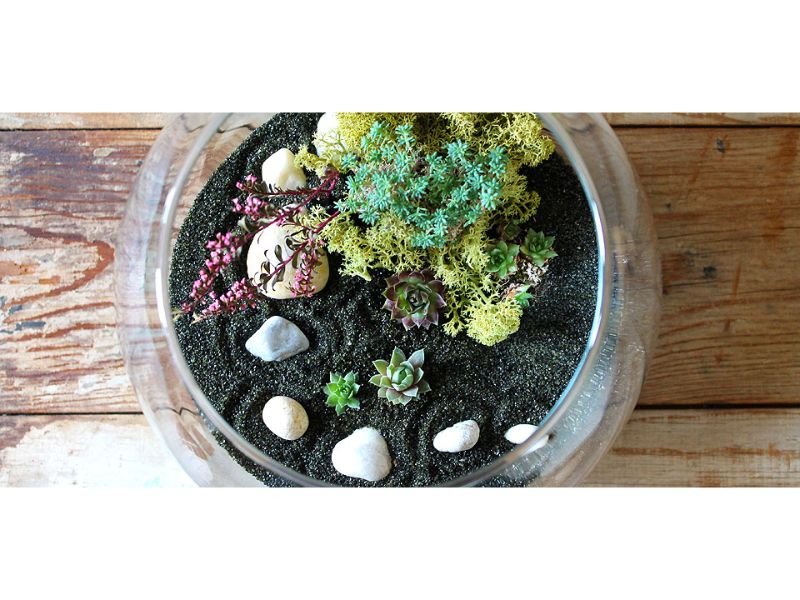
If we talk about workplaces, we might imagine them as places full of stress and chaos. Although this is not completely wrong, say no more to bad migraines and a pinch of serenity with a tiny zen garden indoors for your workplace. Whether you work in the office or are a fan of working from home, this Japanese indoor garden design is made for you.
You need a medium-sized zen garden sandbox, made from wood is better. Fill the zen box with white sand and cover the half top of the sand with smooth gravel stones. Pick up some high organic matter soil to cover the other half side, and cover the soil with a ground-covering moss. To make it more ‘alive’, add a combination of small piles of meditation rocks and tiny momiji maple bonsai, which is best to grow indoors.
Mini Sand Zen Garden for the Kitchen
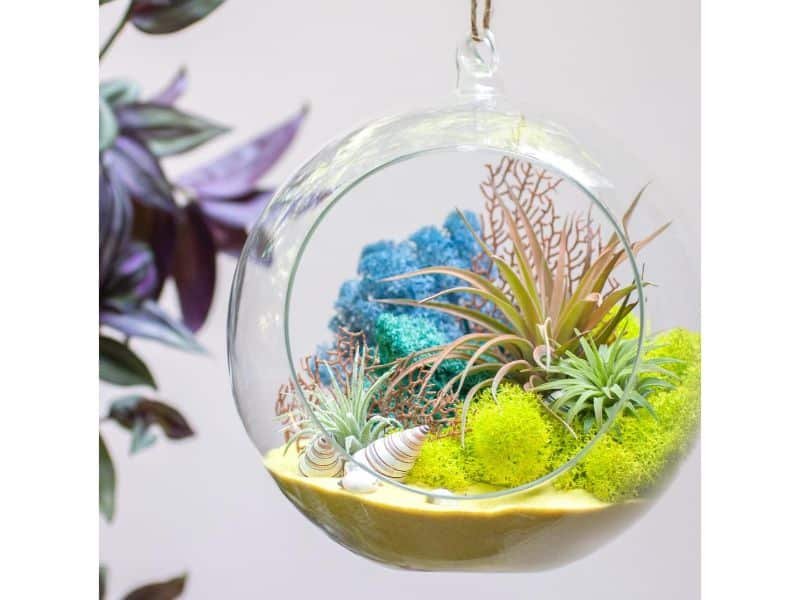
Forget about the boring and classic vase of roses on your dining table, and make your dinner guests awe with the beauty of this easy-to-maintain indoor Japanese garden instead. Pick up a minimalist-style zen planter or pot. The size is up to you. Fill up the planter with well-draining sand or potting soil. Decorate the zen planter with a combination of shohin bonsai and tiny lucky bamboo. Place one aromatic meditation candle on the corner side of the planter or a small Buddha or koi statue as an additional.
Transform Your Living Room Into A Bonsai Palace
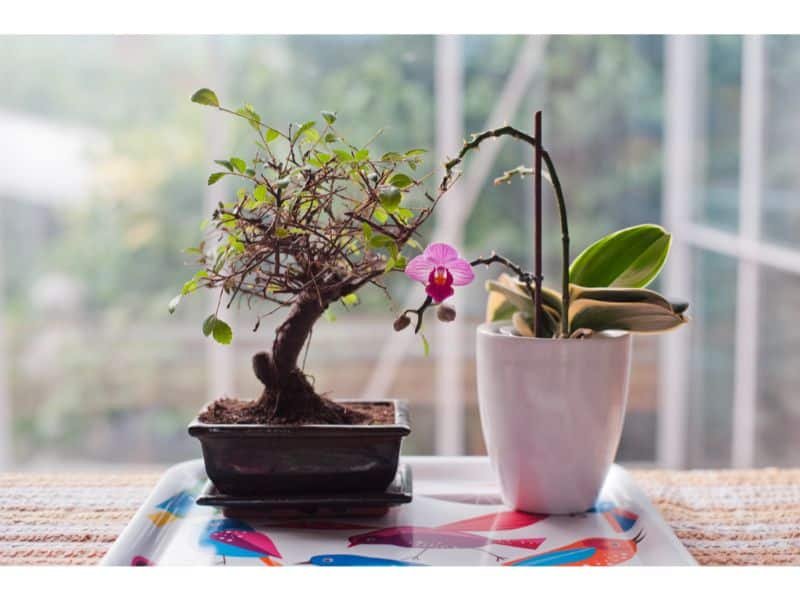
Focus only on growing various types of dwarf bonsai for this Japanese indoor garden design. Play with the pink and burgundy color of the acer palmatum bonsai and make a striking color contrast with the evergreen dwarf boxwood bonsai. Add some stones at the topsoil or get creative with the bonsai pots, known as tokoname, to give it a more authentic Japanese look.
Miniature Fountain Zen To Spark the Corner
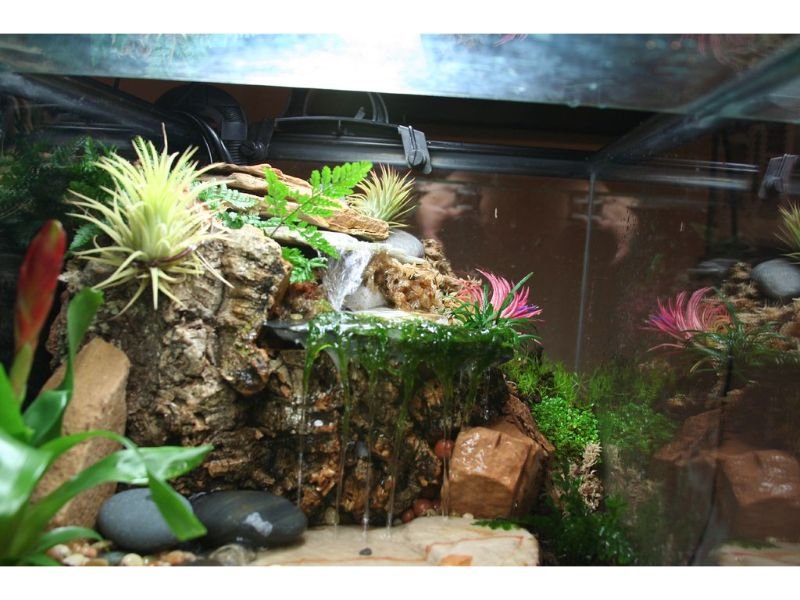
The good thing about miniature fountain zen is, you don’t have to build it from scratch as the eye-catching fountain zen is widely popular in many gardening stores. Invest in the traditional shishi-odoshi, or the authentic Japanese bamboo fountain, to help you relax. Make the indoor Japanese garden more aesthetic by placing a pot of tiny rhododendron nearby.
Yin and Yang Tabletop Garden

You’ll need a round zen sand planter with Yin and Yang design for this indoor Japanese garden idea. Take up some white sand to fill up the Yin part and black potting soil for the Yang side. Make it more attractive by using the help of moss, pebbles, and a tiny Japanese-style stone lantern. This tabletop tiny garden should help to remind you about the good and bad balance in life.
Peaceful Balcony and Patio
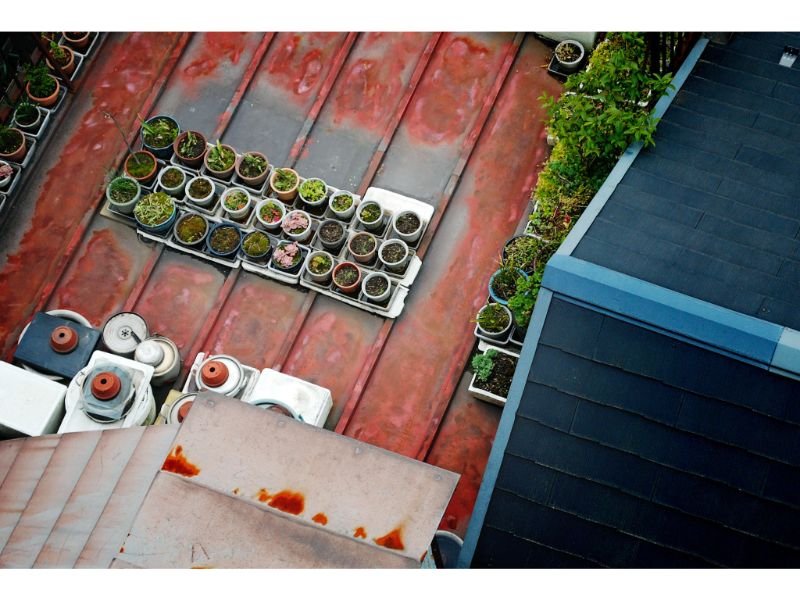
The advantage of making an indoor Japanese garden on a balcony and patio is the wider variety of plants to grow within a limited space. First thing first, decide and divide how much space you would want to transform into a zen garden. With a balcony and patio, you can grow many bigger-sized plants like the indoor-loving kentia palm, flowering wisteria, and azalea bonsai, to a succulents-filled zen sand planter. Place a fountain bamboo in the corner to grab more attention.
A Sense of Spirituality

With this Japanese indoor garden design, creating a flawless atmosphere for de-stress and meditation is not just a dream. Divide the zen garden by using a sand and gravel stone walkway. Fill the left side with medium-sized boulders and cover them with moss. Allow small crassula pine trees and hostas to thrive and bring in more fresh air. Build a little pond on the other side and place a red pagoda lantern nearby to light the zen garden during the night.
Calming Space For Meditation
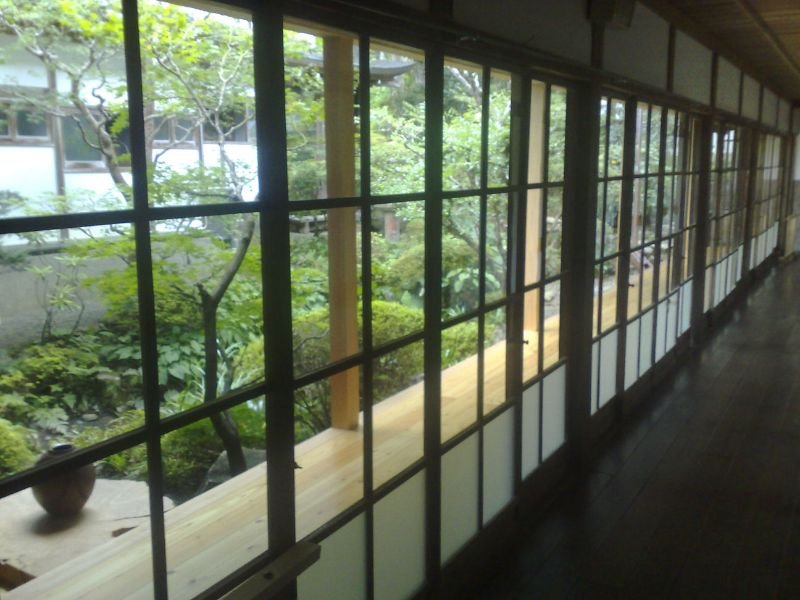
Meditation is all about connecting your soul with the universe. To make it a more calming experience, we recommend using traditional Japanese sliding shoji screens for this indoor Japanese garden idea. Set some pieces of rocks, and plant the ornamental hakone grass and small shrub that thrives indoors. Add the water element by incorporating a wood or stone basin for water storage that flows from the bamboo water fountain. Keep it simple to create a calming meditation space.
How Do You Take Care of Zen Garden Indoor?
As much as any other garden, the indoor Japanese garden loves regular maintenance to keep its soothing nature. Here are some tips to give you an idea of how.
Keep it as a regular schedule
A regular schedule can be done weekly or even monthly to check out the sand and any other stones like gravel and pebbles, including the stepping stones, to know whether it needs to be replaced or not. Include a regular cleaning routine for the bamboo fountain, and lanterns, as well as watering the plants.
Regular pruning
Especially for bonsai, regular pruning is needed and highly recommended. Not only a regular pruning will help keep the plant’s size as you desire, but it’ll also help to cut off the unruly branches and stems, as well as promote new growth for a more lush look.
Lightning, pest control, and cleanliness
We all know plants need an adequate amount of light to thrive, so make sure you pick the best plant based on how much light your indoor garden gets daily. A weekly pest control and cleanliness check are also important to keep the indoor Japanese garden a peaceful and serene place. Remember as the typical zen garden has water elements and various plants on it, cleanliness and pest control are a must to prevent the garden into a mosquito parade.
Wrapping Up: How To Design An Authentic Indoor Japanese Garden?
Creating an indoor Japanese garden is simple, easy, and can be done quickly if you know how to. Using some creativity that blends with all these ideas and tips in mind, you don’t need to pay for some expensive things to get a serene piece of Japan in your indoor space.

New author in the hood. Loves gardening and flowers are my spirit animals (yes I know they are not animals but I insist). I will be covering most of the flowers’ topics here and occasionally random though as well.


